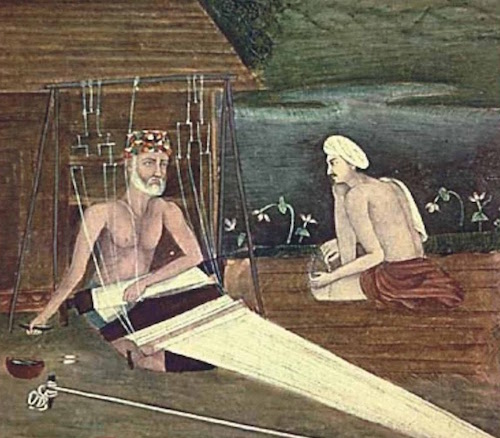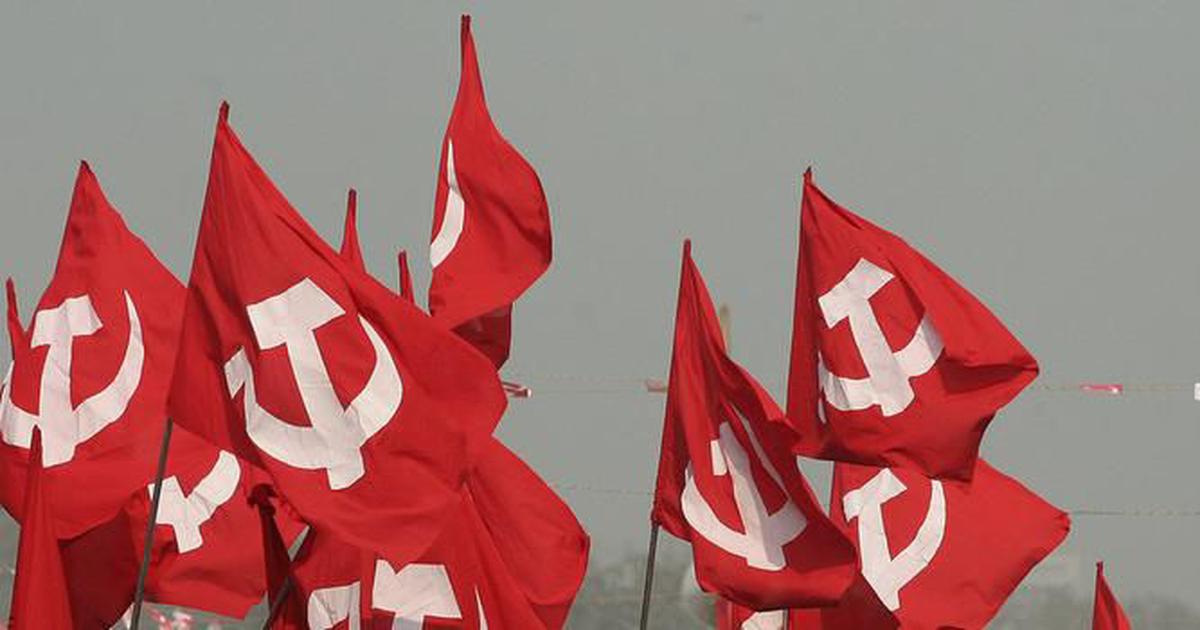
Dalit discourse has chosen Kabir as its symbol. The theoreticians and thinkers of Dalit discourse feel that Kabir’s poetry can show them the way forward. They have reinterpreted Kabir’s literature and have rejected many important assumptions and constructs of the earlier interpretations. They have rejected the belief that Kabir was a Hindu or a Muslim and instead have produced a mass of evidence to prove that Kabir was a Dalit. The Dalit discourse has unanimously elected Kabir as its poet.
One of the important constructs of the Dalit discourse is that only a Dalit can write Dalit literature. Non-Dalits can write “sympathetic” literature but it is not genuine Dalit literature. In literary jargon, it can be called “illusory” literature – a mere semblance. Claims and counter-claims have and are being made about who is entitled to produce Dalit literature. Without going into the interpretation of words like “Dalit”, “Shudra” and “Antyaj”, it can be said that today, Dalit has come to mean, what is called in official speak, the “Scheduled Castes”. The word “Tribals”, used for “Scheduled Tribes”, makes the difference between the two communities clearer. Today, Tribal literature is also building its independent identity. Suffice it to say that according to the writers-thinkers of Dalit Literature, only a person born in one of the Scheduled Castes is entitled to write Dalit literature. What a Dalit organization wrote to Prof Namvar Singh is worth quoting here: “You have been unable to overcome your feudal mindset. The fact is that only a person born from a Dalit womb can feel the pain of the Dalits. Your views on Dalit and women’s writings smack of narrow-mindedness. It is true that anyone can write on and about Dalits and women but anyone other than Dalits or women can only imagine the feeling with which a Dalit and a woman can write about themselves. Since you have not lived that pain, you can, in no way, write as they do.” (Memorandum submitted by Bharat Ratna Bodhisatva Babasaheb Dr Bhimrao Ambedkar Mahasabha, Lucknow, on 9 October 2011. Source: Bahure Nahin Aavna, October 2011-March 2012 combined issue, Page 26).
This combined issue of Bahure Nahin Aavna, quoting from Shukrawar magazine, said that, “Famous Marxist Hindi critic Dr Namvar Singh, following the row kicked up over his statement published in Shukrawar, has clarified that while he is of the view that there cannot be any sort of reservations in literature, this does not mean that he is against the reservations being given to the Dalits, the Tribals and the Backward castes.”
It is thus clear that here Dalits mean Scheduled Castes, which had to bear the unending agony of being treated as Untouchables in the Hindu Varna system.
Non-Dalit Kabir and Dalit writings
Be that as it may, the million-dollar question is whether Kabir was a Dalit? Did he belong to what are today called the Scheduled Castes? The unambiguous answer is “no”. Kabir was not a Dalit. He did not belong to one of the Scheduled Castes. The Dalit castes had to face untouchability. The backward classes were free from this scourge.
Nowhere has Kabir described himself as an “Untouchable”. Even if Brahmin blood flowed in the veins of Kabir, even if he was born into a Julaha family – he was not an Untouchable. Being a Julaha means being a Muslim. There is no concept of Untouchability in Islam. Therefore, for Muslims, Kabir could not have been Untouchable. If the Hindu community did not see Kabir in favourable light, if it treated him as an Untouchable, we should realize that Hindus treated all Muslims as Untouchables – even Syeds, Sheikhs and Pathans. For them, all Muslims were “Mleccha” (barbarian or base persons) and all were Untouchables. The important question here is: Which caste do we believe Kabir belonged to? And what, according to Kabir, was his caste. We will first see what books of Acharya Hazari Prasad Dwivedi, Dr Dharamvir and Prof Purushottam Agarwal have to say about Kabir’s caste. We will also go through the arguments and logic of those who claim that Kabir was a Dalit or an Untouchable. The objective of this exercise is to try and discover the social background of Kabir.
Hazari Prasad Dwivedi’s Kabir

Acharya Hazari Prasad Dwivedi contends that Kabir was a Nathpanthi, though he does not make any conclusive claim regarding the caste of Kabir. The thrust of his arguments is that Kabir was not a Muslim. He does not reject the Brahmin widow angle and harps on Kabir’s Hindu origins. The first line of his book Kabir (Rajkamal Prakashan, New Delhi, 1993) reads “Kabirdas was brought up in a Julaha family” (page 15), meaning thereby that Kabir was born of a Brahmin widow and that he was a Hindu – not a Muslim – by birth.
Dwivedi is not even ready to accept that the society in which Kabir lived was Muslim. “It seems that at the time when Kabir was embellishing the Julaha caste, it had embraced Islam only a generation or two earlier [ibid page 17].” Dwivedi’s surmise is that Kabir’s caste was a recent convert to Islam. Obviously, the idea is to somehow ensure that Kabir is completely dissociated from Islam or Muslims – even if a literary historian has to resort to assumptive phrases like “it seems” to do that.
Another example: “It appears that though in Kabir’s times, Julahas had embraced Islam, the people still addressed them as Koris … this writer does not believe that Julahas are the Muslim version of Koris … Here it might be mentioned that while Kabirdas repeatedly calls himself a Julaha, at some places, he has described himself as Kori as well [ibid page 18].”
It is obvious that it is difficult to unravel the truth in the “it seems” and “it appears” style. In this small quote, Dwivedi makes so many different and confusing statements that what he is exactly saying about Kabir’s caste is impossible to decipher. Kabir describes his caste as “Julaha” (Kori occasionally) but Dwivedi does not believe that “Julahas are the Muslim version of Koris”. He considers Koris and Julahas as discrete communities. What he is indirectly saying is that Koris are Hindus and Julahas are Muslims. Directly, he is saying that “In Kabir’s time, Julahas had embraced Islam”, which means that “Kabi’s social background was of non-Muslim Julaha community”. And “it appears” to him that “non-Muslim Julaha community had embraced Islam in the time of Kabir”.
Dwivedi links this “non-Muslim Julaha community” with the caste of “Nath Yogis who were married and had families”. “There are many things that lead one to believe that the Julaha family into which Kabir was born was the Muslim version of Nath Yogis raising families [ibid page 21].” Dwivedi thus emphasizes the Nath identity of Kabir while underplaying his Muslim connection. Dwivedi writes, “What strikes one is that Kabirdas has called himself a Julaha many a time but a Muslim not even once. He consistently says that he was neither a Hindu nor a Muslim [ibid page 21].” Dwivedi’s conclusion is that Kabir considered himself a “Nath Yogi who was raising a family”, though Kabir never says that himself. Kabir wants to identify himself as a “Julaha”. Caste and religion determine the social identity of a person. Kabir considers his social identity to be “Julaha”. Dwivedi wants to underplay the “Julaha” identity while linking Kabir with another religion.
Despite linking Kabir with the Nath Panth, Dwivedi also refers to conversion to another religion. This new religion is Islam and Dwivedi’s conclusion about the newly converted castes is that, “In the eyes of the wider Hindu community living around, they were despicable and untouchable [ibid page 24]”. A famous line of the book is that “Kabir was an Untouchable by birth but venerable by deeds” [ibid page 134].
What does Dwivedi mean by “Untouchable”? Does he mean a person born into Scheduled Castes? Untouchability is a part of the framework of the Hindu religion only. There is no concept of Untouchability in Islam. In principle, no caste is considered untouchable by the Muslims. Nowadays, on the basis of the theorizations of the Aajivak religion, it is being asserted that Dalit castes are not Hindu. But the Hindu religion regards castes that are untouchable as Hindus. Dwivedi confounds the issue of Kabir’s caste. He insists that Kabir was not a Julaha by birth; he was only brought up in a Julaha family. But he does not reveal the caste into which Kabir was born. Yet, he says Kabir was clearly an “Untouchable by birth”. When one does not know for certain the caste into which Kabir was born, how can he be called an “Untouchable by birth”? If he is considered a Julaha then clearly, Julahas were and are not “Untouchables” or Scheduled Castes. They are a Backward caste. The concept of Backward castes extends to the Muslim community. Scheduled Castes are limited to the Hindu community. No writer and thinker of Dalit discourse is a Muslim.
Dr Dharamvir’s view
Dr Dharamvir makes Kabir the foundation of Dalit thought. Paying tributes to his endeavour, Surajpal Chauhan writes, “As far as Kabir is concerned, he has created such a situation that before reading any other author on Kabir, it has become imperative to read him. The way he snatched Kabir from the brahmanical camp left non-Dalit litterateurs dumbfounded …” Dr Dharamvir very rightly says that Kabir’s “sakhi” (couplet), Ut te koyee na aavayee, jasoon puccheye dhaay (No one ever came down from the heavens to tell anything about it), which he sang accompanied by an “ektara” (single-stringed instrument), is the correct ideological basis of Dalit thought. In Dr Dharamvir’s own words, “We will free Babasaheb from Buddha. We love him too much and we will bring Kabir back to his home.” (Bahuri Nahi Aavna; combined issue October 2011-March 2012; page 39-40)
Dr Dharamvir has voiced his disagreement with the critics of Kabir. Dr Dharamvir, who used the touchstone of Dalit discourse for evaluating Kabir, has this to say about Harioudh: “He should have stopped in his tracks if for no other reason than for praising the Hindu religion that brought him into this world as an Untouchable. The fact is that if Kabir owes anything to the Hindu religion, it is his Julaha caste because of which Ramananda did not make him his disciple. If Kabir fought anything all his life, it was the demon of Untouchability. If, despite this, Harioud ji describes Kabir as a Hindu, he seems to be attempting a deliberate misrepresentation [Kabir Ke Aalochak, Vani Prakashan, New Delhi, 1997, page 29].”
Dr Dharamvir describes Kabir both as an “Untouchable” and a “Julaha”. Both cannot be true. Dr Dharamvir’s emphasis is more on “Julaha”: “As he was born into the Julaha caste, societal norms did not permit Kabir to enter the Dwij temples of Kashi [ibid page 47].” Once you have accepted that Kabir was a Julaha (“Muslim”) then, why the talk of entering temples?
 Dr Dharamvir considers Kabir “saint of the Dalits”: “The way Kabir is being treated by the intellectual class today is an old practice. Other saints of Dalits have also been treated in this manner [ibid page 86].” As for what qualifies Kabir to be called “saint of the Dalits”, Dharamvir had already revealed that he was an Untouchable. At another place, Dr Dharamvir puts it differently: “Can a person like Kabir, who was born into the Julaha caste, be considered untouchable by Brahmins … [ibid page 91]?” Now, at long last, comes the word “untouchable”, meaning Kabir should be considered a Dalit, even if he was a Julaha. To make Kabir a Dalit, we would have to free him from the Julaha identity. But Dr Dharamvir wants to make Kabir both “Dalit” and “Julaha”.
Dr Dharamvir considers Kabir “saint of the Dalits”: “The way Kabir is being treated by the intellectual class today is an old practice. Other saints of Dalits have also been treated in this manner [ibid page 86].” As for what qualifies Kabir to be called “saint of the Dalits”, Dharamvir had already revealed that he was an Untouchable. At another place, Dr Dharamvir puts it differently: “Can a person like Kabir, who was born into the Julaha caste, be considered untouchable by Brahmins … [ibid page 91]?” Now, at long last, comes the word “untouchable”, meaning Kabir should be considered a Dalit, even if he was a Julaha. To make Kabir a Dalit, we would have to free him from the Julaha identity. But Dr Dharamvir wants to make Kabir both “Dalit” and “Julaha”.
A thought that strikes one in the above-quoted sentence is: Where was the need for Brahmins to categorize the Julaha caste as untouchable? For the Brahmins, Julahas belonged to a different religion. And if Julahas were Untouchables for the Brahmins in some sense, so was the entire Muslim community. Clearly, there are contradictions in Dr Dharamvir’s formulations.
Dr Dharamavir believes that Kabir was a “Julaha” and a “Muslim”. What he is stressing is that there is no way Kabir can be considered a “Hindu”: “If he [Acharya Hazari Prasad Dwivedi] had proved that Kabir was not born into a Muslim family on the basis of historical evidence, we could have accorded some weight to his opinion but Dr Dwivedi’s brahmanical stubbornness is such that even though it has been historically proved that Kabir was born into a Muslim home, he is not ready to concede that he was a Muslim [Kabir: Nayee Sadi Mein – 2; Vani Prakashan, New Delhi, 2000, page 86].”
This means that Dr Dharamvir is taking the stand that Kabir was a Muslim by birth. He believes that Kabir was a “Dalit Muslim born into the Julaha caste”. But another quote from his book would render the endeavour to dig up Kabir’s social background next to impossible: “A related question is whether Kabir was a Hindu. My answer is that he was not a Hindu by belief. The truth is that Kabir was not a Hindu in any respect [ibid pages 86-87].” This makes Kabir a “non-Hindu Dalit Muslim born into Julaha caste” and it becomes difficult to resolve the matter of Kabir’s social base. Another riddle follows: “It is true that Kabir was neither a Hindu nor a Muslim … Kabir’s religion was completely divorced from Hindu religion and Islam. It was Dalit religion [Kabir: Nayee Sadi Mein-3, Vani Prakashan, New Delhi, 2000, page 7].”
Thus Kabir was neither a Hindu, nor a Muslim, nor a Julaha. His identity was of a Dalit and he believed in Dalit religion. I want to ask the same question again: Can we identify Kabir’s social background while ignoring his caste? When it is a fact that Kabir’s caste was “Julaha” and when Julahas have a clear link with Islam, Kabir should be freed from the “Dalit” and the “Untouchable” tags. These words relate to the Scheduled Castes and these castes have nothing to do with Islam.
The Dalit discourse and the Dalit community that has not fallen prey to brahmanical prescriptions consider Kabir its religious guru. This is a decision that a section of the Dalit community has taken on its own. If it finds Kabir’s poetry to be desirous of liberation, well, it is entitled to hold that view. Many non-Dalit saint-poets have shown the oppressed the way forward. If Dalit discourse sees non-Dalits as its sources of inspiration, what objection can one possibly have to it? But just as in the case of the earlier descriptions of Kabir as the son of a Brahmin widow, attempts to obliterate Kabir’s real social identity are being made by describing him as a Dalit and an Untouchable. Kabir was neither a Brahmin nor a Dalit – he was a Julaha – a Backward Muslim. Even today, Julahas have been categorized as backward-class Muslims. Kabir considered Julaha as his prime identity. In the Muslim social hierarchy, the lower the caste, the lesser is its say in theological matters. Much has been written about what Kabir said about religions, religious scriptures, god and devotion. We have nothing to add to it. What we are trying to prove here is that Kabir was not a Dalit and the Dalit discourse would do well to remember that. Kabir can be praised without considering him a Dalit. If Kabir is great, it is because of his poetry, because of his social concerns, because he stood up against injustice of many kinds. If Dalit discourse finds anything useful in Kabir’s poetry, it can always use it. But for that, it is not necessary to foist Dalit identity on him.
Kabir’s poetry bears testimony to the fact that a non-Dalit can also give expression to the agony of the oppressed Dalit community. The formulation of the Dalit discourse that only Dalits can write Dalit literature collapses at the door of Kabir.
Kabir’s “caste” shows that Dalit discourse should steer clear of brahmanical prescriptions. Brahmanism propounds many principles and weaves a web of rituals to retain its casteist domination. Similarly, the Dalit discourse is also trying to establish its casteist domination in the name of “pain”. It wants only the Dalit castes to be seen as warriors against injustice. It wants to obfuscate the contribution of others. Dalit discourse has raised many an issue. The struggle on the key issues has been going on for centuries. Almost 85 per cent of the people of the country backed the fight against Brahmanism and the upper castes. Kanshi Ram also talked of the 85 per cent. He used the word “Bahujan community” for the entire population barring Brahmins, Thakurs and Banias. He had brought together the Dalits, the Backwards and the minorities to wage this struggle. “Sau mein nabbe shoshit hain, nabbe bhaag hamara hai” (Ninety of hundred are exploited; we are the owners of ninety per cent).
To sum up, Dalits never fought alone against religion and caste and for their share in power. But the Dalit discourse appears to be desperate to establish caste-based domination. What is a matter of concern is that Dalit discourse – an important component of the social reform movement in India – seems to have forgotten the history of the struggle of Dalits, and like brahmanical forces, seems to be bent upon establishing its caste-based domination.
Purushottam Agarwal’s arguments

Prof Purushottam Agarwal’s Akath Kahani Prem Ki: Kabir Ki Kavita Aur Unka Samay (Rajkamal Prakashan, 2009) is the latest book on Kabir. He has put forward a string of new arguments to prove that Kabir’s caste was a “Julaha”. The third chapter of the book titled Kasi Basey Julaha Ek quotes from many sources and cites a lot of evidence to prove that Kabir was a Julaha-Muslim and that Muslim traditions and rituals were followed and Muslim festivals were celebrated in his home and community, although at the personal level, Kabir had his own distinct likings and beliefs. Kabir’s contemporaries have described him as a Julaha. According to Kabir’s “gurubhai” (disciple of the same guru) Peepa, Eid and Bakar Eid were celebrated in Kabir’s home and cow was slaughtered. Dhanna also describes him as “Jolahara”. In his Ain-i-Akbari, Abul Fazal says that Kabir was a “muvahid” (monotheist). Tukaram describes him a momin (Muslim weaver). Quoting from many sources, Prof Purshottam Agarwal has sought to prove that Kabir was a Julaha and his family was Muslim. He has also contextualized the attempts to create confusion about his caste.
Prof Agarwal does not use the word “Untouchable” or “Dalit” for Kabir. As I said at the beginning, Kabir has never described himself as an “Untouchable” anywhere and neither have the saints and their disciples who were his contemporaries. The use of this word for Kabir gained currency courtesy of Acharya Hazari Prasad Dwivedi famously describing him as “an untouchable by birth but venerable by deeds”. Dr Dharamvir consciously used words like “Dalit” and “Untouchable” for Kabir and declared him a symbol of Dalit discourse. The Marxist critics of Hindi described Kabir as a Dalit and an Untouchable to give him the halo of a revolutionary. It was after the intervention of Dalit discourse that the Marxists stopped harping on the “revolutionary” tag.
Describing Kabir as a Backward is not aimed at drastically altering the evaluation of his poetry. But what will have to be done is to reject the critiques of Kabir that were written on the presumption that he was a Dalit. It is fine if Kabir’s poetry suits Dalit discourse. But if this suitability has anything to do with Kabir being considered a Dalit, then it needs a rethink.
Published in the Bahujan Literary Annual May 2015 issue of the Forward Press magazine
For more on Bahujan literature, visit http://www.amazon.in/dp/





